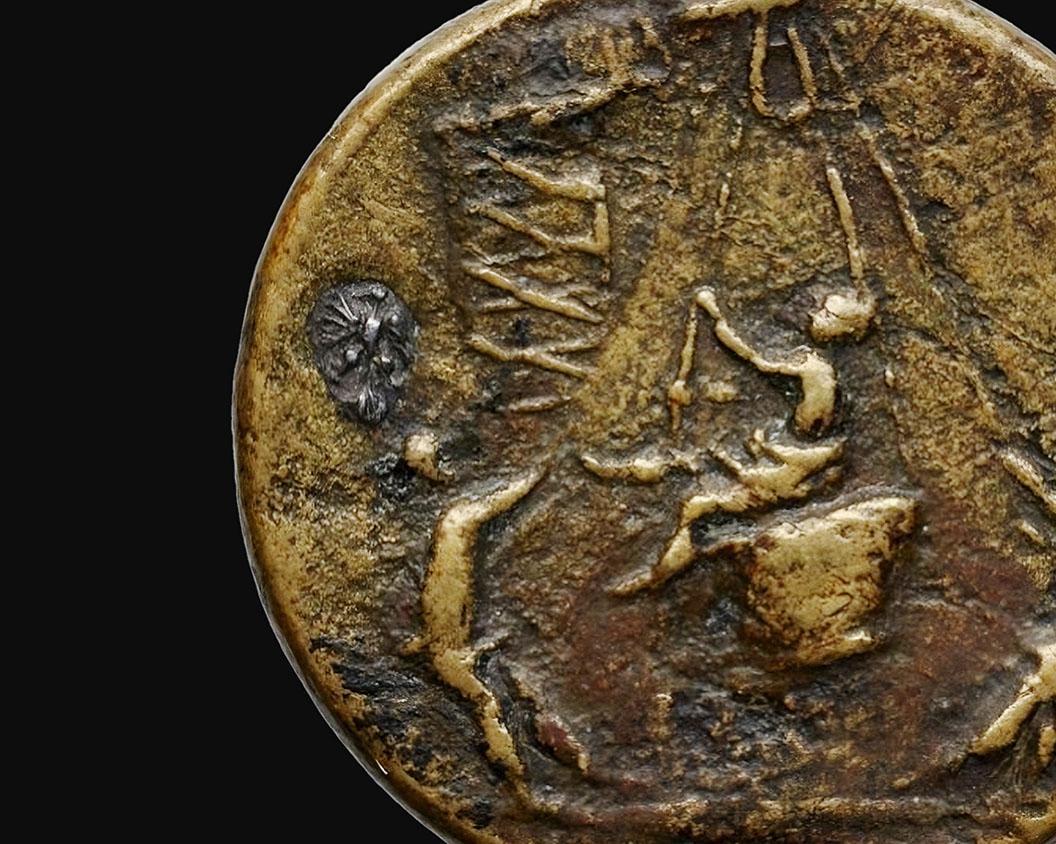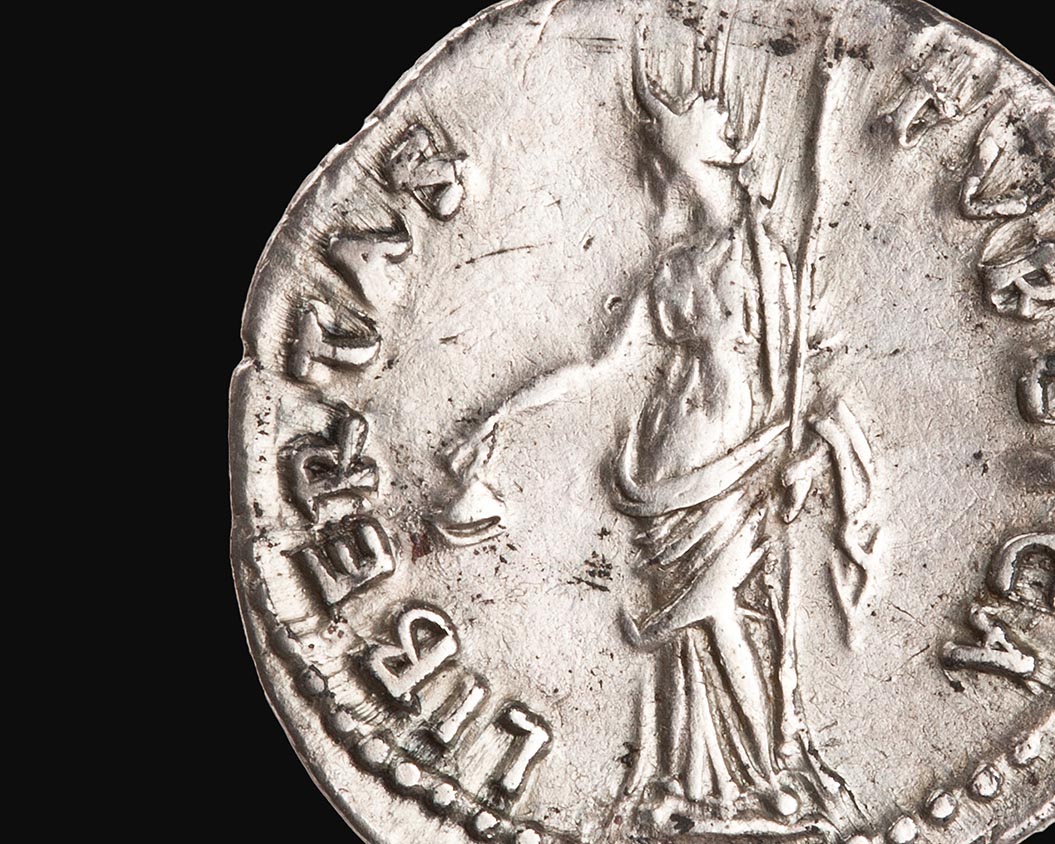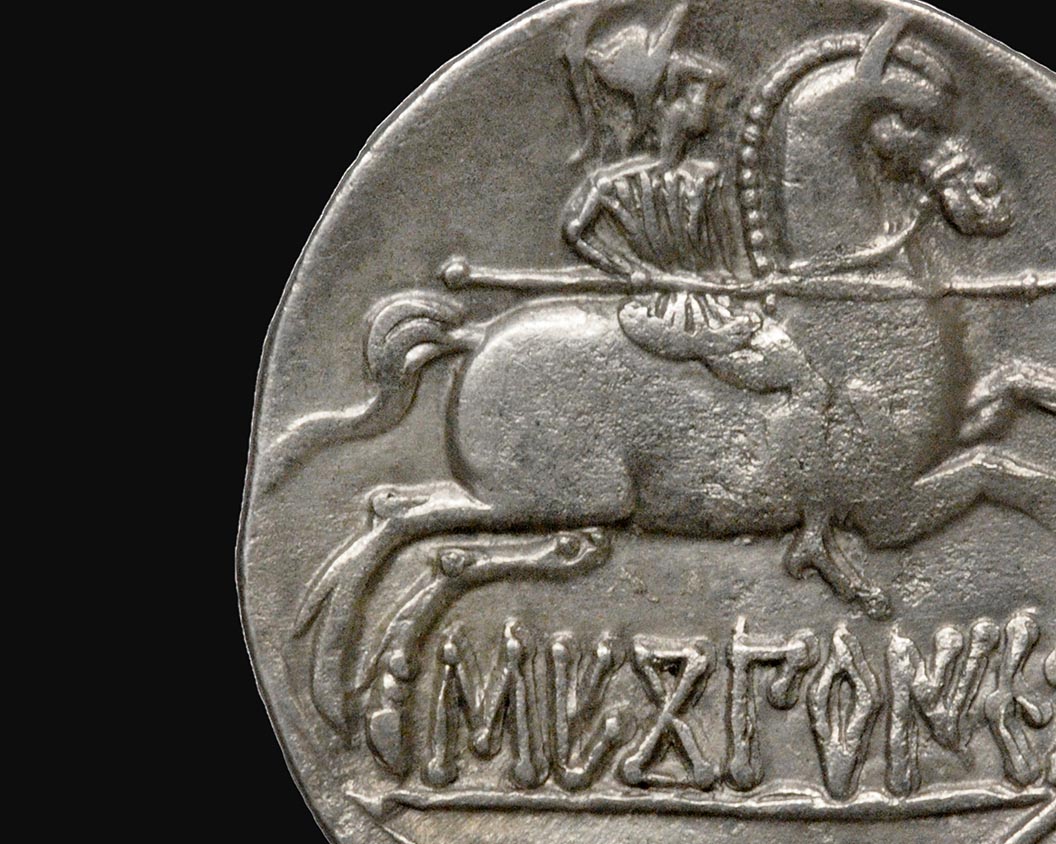African Money
Return to Drachmas, Dubloons, and Dollars homepage
Although the rulers of the great Ethiopian kingdom of Aksum, which flourished between AD 270 and 630, produced their own round coinage to facilitate trade with the Roman and Byzantine Empires, many regions of Africa less closely linked to the Mediterranean world and its concepts of money developed their own local currencies.
As early as the 14th century, cowrie shells were used in West Africa, and elsewhere, as a form of money for local transactions. By the 17th century, cowries had become so popular that European traders began to ship the shells from India to supply the West African economy. Because of its value as a commodity, bars of salt were also frequently used to make payments and, from the 18th century on, could be converted into European trade currencies.
Large iron and copper ingots hammered into a variety of different forms, ranging from twisted Kissi “pennies” to representions of farm implements to jewelry, were produced both as stones and displays of wealth. The shaping of the ingots indicated the quality of the metal and gave proof that it could be worked. These forms of wealth were not only useful for mundane market exchange, but also had important social and ritual functions in native African societies. In many cases, they were required as gifts to cement the relationship between husbands and the parents of their brides.
In the 19th and early 20th centuries, European style coinages (see Case 12) and paper currency circulated alongside most of these native forms of money.
Aksumite Coinage
The ancient Kingdom of Aksum flourished in the region of modern Ethiopia from the 3rd until the mid-7th century AD, when the rise of Islam weakened its power. Aksumite kings controlled trade in and out of the Red Sea and were the allies of Roman emperors and Sasanian shahs.
Aksumite gold (late 3rd century AD) of King Endybis. This king was the first Aksumite king to issue coins.
Aksumite bronze coin (early 7th century AD) of king Wazenas showing four crosses around a gold plug. Aksum first became Christian in the 4th century AD.
Salt
Salt is an essential part of the human diet—so much so that many cultures have used it as a form of payment. In Africa, merchants and consumers were adept at dividing their portions of salt in order to make exact payments. If chunks eventually became very small they could be used to flavor food.
Salt bound in bamboo, Sierra Leone (early 20th century). The binding was of a fixed size and allowed the salt to circulate in standard units.
Rock-cut salt, Ethiopia (early 20th century). In this part of Africa, the value of salt was calculated in Maria Theresa thalers at rates that varied by supply (see Case 8 for a coin of that type).
Cowrie Shells
The most common species of cowrie is native to the Maldive Islands in the Indian Ocean, and its shell was used as money in many parts of Africa and Southern Asia. The cowrie illustrates the principal that any item whose quantity is inherently limited can be used as money. By the mid-20th century, however, shells from the Maldives as well as from other sources became so common that cowrie-based exchange ceased.
String of 39 cowrie shells (19th century?). In 1892, in Tanzania, 3 to 5 cowries purchased an egg; 100 cowries purchased 2 balls of soap.
Iron and Copper
Iron and copper can both be worked at relatively low temperatures. Many cultures have used these metals as payment, with each culture choosing a distinctive form that usually indicates the high quality of the metal. In addition, considerable skill was required to fashion many of these objects—an aspect which made them more useful as a desirable form of payment.
Seven so-called “pennies” of the Kissi tribe, Liberia (early 20th century). The twisted and hammered iron rods with distinctive ends show that the metal can be worked in four different ways and is, therefore, of high quality. These rods circulated interchangeably with European forms of money.
Iron “hoe” money of the Makai tribe, Cameroon (early 20th century). African money frequently came in shapes reminiscent of the tools and weapons into which it could be made.
Miniature iron axes of the Fang tribe, Gabon (early 20th century). Thousands of these “axes” were paid by husbands to the families of their brides.
Copper Katanga cross, Congo River Basin (early 20th century). The Congo region is very rich in copper and these crosses, made in sand molds, circulated as money. Crosses of this type are known from the 13th century AD.
Ring Money
The bronze rings common in many West African cultures stand at the intersection of art, jewelry and money. Many come in forms that can be worn, thus displaying the wearer’s wealth. The copper from which they are made is intrinsically valuable and, in this regard, they are similar to other forms of African money. The manilla is a particular form common in Nigeria and copied by European powers, in part, for the purchase of slaves.
Bronze ring, West Africa (19th or 20th century).
Bronze ring, West Africa (late 19th century).
Bronze ring, West Africa (late 19th century).
Bronze manilla, European copy (early 20th century). This piece copied a common form of Nigerian money. Many such copies were not accepted because they gave off the wrong sound when stuck.
Return to Drachmas, Dubloons, and Dollars homepage
Other pages of the exhibit:
[posts_grid columns=”4″ rows=”6″ order_by=”date” order=”ASC” meta=”no” link=”yes” category=”DrachmasDubloonsDollars”]




